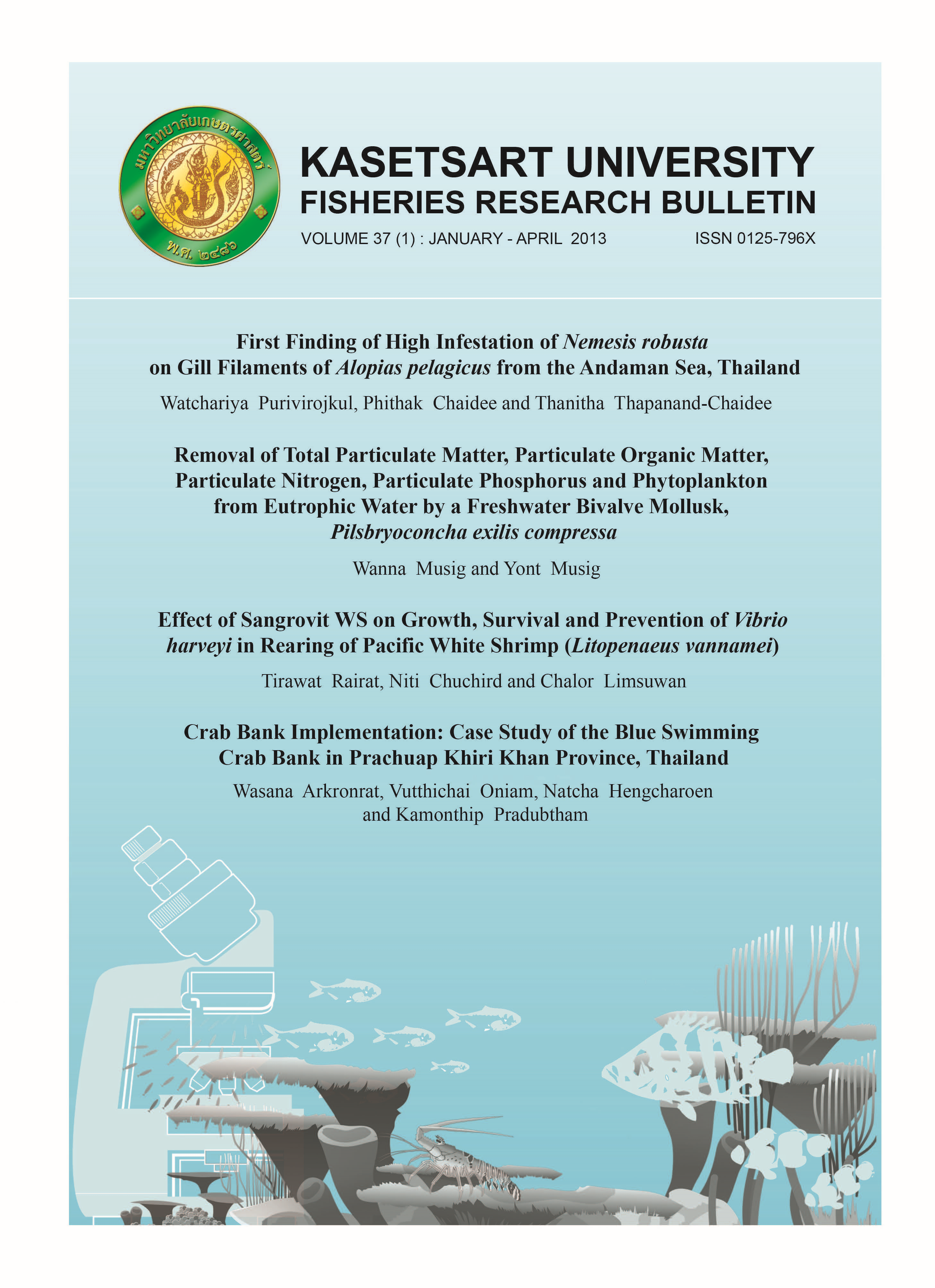Removal of Total Particulate Matter, Particulate Organic Matter, Particulate Nitrogen, Particulate Phosphorus and Phytoplankton from Eutrophic Water by a Freshwater Bivalve Mollusk, Pilsbryoconcha exilis compressa
Main Article Content
Abstract
The ability of a freshwater bivalve mollusc, Pilsbryoconcha exilis compressa, to counteract eutrophication problems by filtering particulate matter, particulate nitrogen, particulate phosphorus and phytoplankton out of eutrophic water was evaluated in eutrophic freshwater pond. Parameters measured were total particulate matter (TPM), particulate organic matter (POM), particulate nitrogen (PN), particulate phosphorus (PP) and chlorophyll a (Chl a) in eutrophic pond water flowing through a 10 m flume covering 5 m2 of artificial bed of Pilsbryoconcha exilis compressa stocked at 4 kg bivalve/m2. When eutrophic pond water passed through the bivalve bed, all the measured parameters significantly decreased (P<0.05). TPM, POM, PN, and PP decreased from 67.7, 25.0, 1.050 and 0.111 mg/L to 52.7, 20.0, 0.689 and 0.078 mg/L, respectively, while Chl a content decreased from 55.2 µg/L to 43.6 µg/L. Average removal rates were 22.2, 19.7, 34.3, 25.5, and 21.0% for TPM, POM, PN, PP and Chl a, respectively. Water turbidity decreased from 73.6 to 62.6 NTU with an average reduction rate of 14.9%.


